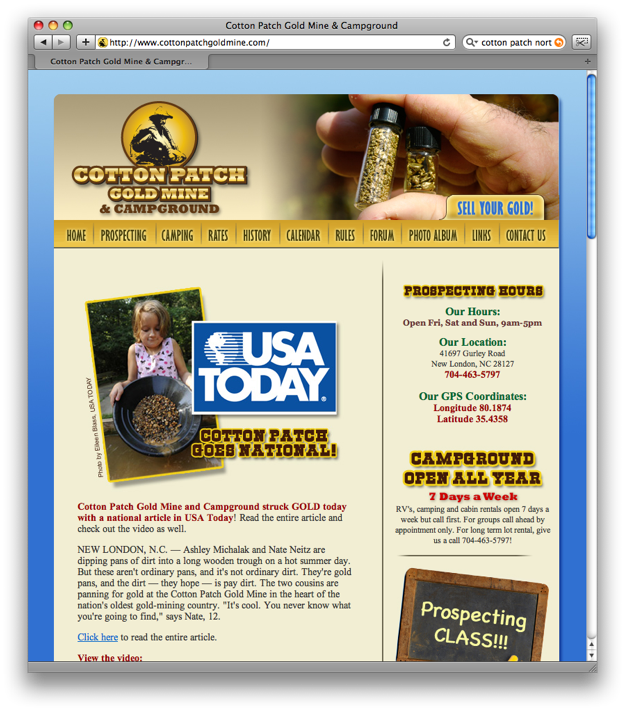North Carolina gold tends to be small flakes. The largest found at the Cotton Patch since owner Jeff Pickett took over two years ago was 8 grams – about the size of your pinky nail. At current prices, that would be worth about $240. “Anything larger than that is a heart attack,” Burns says.
Pickett charges prospectors by the amount of dirt they sift. The dirt is partly crushed rock – gold is often found in the presence of quartz, which has to be pulverized to extract the gold. The rest is dirt from the lode on Pickett’s property.
For $12, you get five 2-gallon buckets of dirt, a pan and a small bottle for keeping your gold. Panning takes patience, dipping the pan into the water to wash away the lighter dirt, tossing aside the bigger stones, and watching for tiny flecks of gold in the fine black sand that’s left. It’s not easy. “I’m getting a strong right arm,” Burns says.
Some prospectors use a Gold Magic wheel, a kind of motorized pan that can process dirt about five times faster than panning. More-eager gold-diggers use a sluice, a long, metal tray with riffles on the bottom to catch the gold. You put it in a creek bed and sift the pay dirt into it, letting the stream wash away the dirt.
